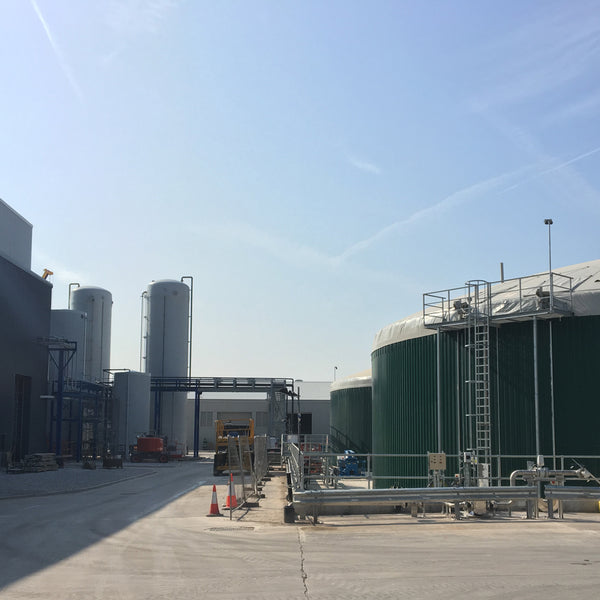
9 Church Field Road, Sudbury, Suffolk, CO10 2YA
The AD process involves the breakdown of organic matter in the absence of oxygen by micro-organisms called methanogens. Instead of rotting in landfill and emitting methane, a powerful greenhouse gas, the waste is broken down to produce bio gas - a mixture of methane and carbon dioxide. This provides a vital source of renewable energy, and produces a valuable biofertiliser for farmland. The green energy produced during this process is then exported to the National Grid, dramatically reducing the UK's dependence on fossil fuels and minimising greenhouse gas emissions in the process.
By installing an efficient and accurate weather monitoring system on site with supporting weather data software, AD plant operators can record the wind direction, wind velocity and air temperature, assess risks to site and the local community and the environment as a whole and use this vital information to inform decision-making for site activities.
On-farm anaerobic digestion (AD) enables the recycling of organic waste into nutrient-rich fertiliser, lowering costs, reducing landfill waste, cutting emissions, and producing a renewable, low-carbon energy source.
News + events
)
Whether operating a landfill, AD or bioenergy site, managers must abide by rules set out by the Integrated Pollution Prevention and Control (IPPC) Directive, the Environmental Protection Act 1990and the Environment Agency: H4 Odour Management guidance, to name a few.
Highlighting the necessity for meteorological data, Renescience’s Air Quality Assessment states:
“The most important meteorological parameters governing the atmospheric dispersion of pollutants are wind direction, wind speed and atmospheric stability … a number of meteorological parameters need to be measured on an hourly basis. These parameters include wind speed, wind direction, cloud cover and temperature”.
Skyview’s robust weather monitoring systems and associated software allows the Renescience team; and many more like them, to assess real-time site conditions for operational planning, and utilise online functions such as wind rose mapping and historical data for trend analysis, site investigations and legal compliance.
Anaerobic Digestion (AD) site operators must have an approved odour management plan in place to prevent or minimise emissions if odour from site activities may cause pollution/annoyance beyond the site boundary, as set out in the 3.2.2 (a) - SR2021 No 7*.
“The operator shall: (a) if notified by the Environment Agency that the activities are giving rise to pollution, submit to the Environment Agency for approval within the period specified, an emissions management plan which identifies and minimises the risks of pollution from emissions of substances not controlled by emission limits;” and
“(b) implement the approved emissions management plan, from the date of approval, unless otherwise agreed in writing by the Environment Agency.”
There are also strict guidelines in place with regards to monitoring and reporting and submitting records to the Environment Agency:
“The operator shall, unless otherwise agreed in writing by the Environment Agency, undertake monitoring for the parameters, at the locations … The operator shall maintain records of all monitoring required by these standard” (3.5.1)
- with a new “medium combustion plant” or “MCP” required to carry out monitoring measurements within four months of the issue date of the permit or date of operation, whichever is later. (3.5.3)
A detailed risk assessment of odour from all processes must be undertaken for both normal and abnormal risks. Meteorological (abnormal) risks (e.g. wind direction or strength, rainfall/flooding, low/high temperature, inversions) must be assessed for risk and incorporated into an action plan.
The year 2023 saw one AD site operator fined over £26,000 for failing to comply with Environment Agency site rules with regards to odour control.
By installing an efficient and accurate weather monitoring system on site with supporting weather data software, AD plant operators can record the wind direction, wind velocity and air temperature, assess risks to site and the local community and the environment as a whole and use this vital information to inform decision-making for site activities.
"The majority of farms do not currently process slurries, crops or other feedstocks by anaerobic digestion. In 2019, just 5% of farms were processing by anaerobic digestion but this has increased in recent years, rising to 9% in 2023.
Crops were the most common material type being processed, with 5.3% of farmers choosing this option in 2023. Slurries and manures were the next most popular option processed by 5.1% of farmers." Accredited official statistics
Anaerobic digestion - Gov.uk.